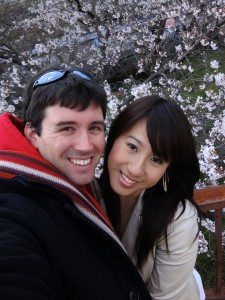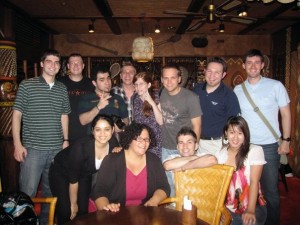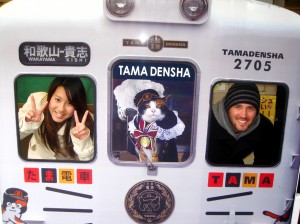Announcing JETwit Anecdotal Article Series!
JETwit Anecdotal Article Series is new feature by Jayme Tsutsuse (Kyoto-fu, 2013-2014). Jayme is a JETwit Job Manager and organizer of Cross-Cultural Kansai. She’s starting a new chapter in NYC and excited to explore new career opportunities.
Hi everyone!
Here at JETwit, we love it when JETs share stories of their experiences in Japan. That’s why we’re bringing back the Anecdotal Article Series! This is your chance to share your experiences as a JET participant with the whole JETAA community.
Each month, a new topic will be announced. If the topic sparks a particular memory for you, just fill out our quick Google Form! Stories can be anything related to the monthly topic about your time in Japan as JET.
For our first month, we would like to bring back the topic that has inspired the revival of the Anecdotal Articles, religion. Enjoy the anecdotal stories below compiled by JETwit Founder, Steven Horowitz, for the Spring 2006 issue of the JETAANY Newsletter, then jump over to our Google Form to share a story of your own! Read More
Japan Writers Conference coming up
The Japan Writers Conference is a free event for English-language writers in a variety of fields—poets, novelists, journalists and even textbook authors. It’s held in a different part of Japan every year, with this year’s event set for Oct. 25-26 in Morioka, Iwate Prefecture.
JETs and JET alumni have been well represented among those attending and also those giving presentations at the previous seven annual events. One of them, Tom Baker (Chiba 1989-91) made the following video about the 2013 Japan Writers Conference, which was held in Okinawa. In it, you’ll also hear from JET alumni Percival Constantine (Kagoshima 2008-13), Todd Jay Leonard (Aomori 1989-1992), Benjamin Martin (Okinawa 2008-13), and Autumn Widdoes (Okinawa 2010-14).
For information on this year’s event, check the official website: http://www.japanwritersconference.org/.
JETwit Job Hunter Profile: Julie Yang
JETwit Job Hunter is a feature started by Autumn Widdoes (Okinawa-ken 2010-14) where we share the profile of a JET or JET alum currently seeking work and invite JETwit readers to share any advice, suggestions, or perspectives. Autumn is a writer with a focus on performance and film who will soon return to the job market herself. She’d like to put her four years of experience in Japan to good use in future employment.
Job Hunter: Julie Yang (Nagasaki-ken, 2009-14) is a JET based in Sasebo, Nagasaki Prefecture. She will return to the USA and is looking for a job in Hawaii.
Objective: To gain employment in Hawaii in an administrative or program assistant job within the non-profit sector or other Japan-related industries. She is also interested in editorial and translation work.
Areas of Interest:
- Japan-related
- Non-profit
- Translation
- Editorial
Job Hunting Strategies:
- Direct contact with various non-profits based in Hawaii
- Skype interviews
Challenges: Because Julie has been living in Japan, she’s faced the challenge of not being based in the local area where she is seeking employment. Without a local address, she is having a difficult time getting companies or organizations to interview her. She is originally from Washington, DC, so she does not have extensive networks in Hawaii to help her and she finds that this makes the job search more competitive. She also feels that interviewing via Skype does not allow you to have the same in-person presence that allows you to present your qualifications, personality, and enthusiasm for the job. Despite all of these challenges, she says, “I’ve been able to get interviews and positive responses…this speaks to the reputation of the JET program.”
She is seeking networking opportunities with JET alumni in Hawaii. She would like to make contact with those working in Japan-related or non-profits there. Any references or advice from any fellow Hawaii-based JETs is appreciated.
Web Presence:
- To contact Julie Yang visit her LinkedIn Profile.
To help this JETwit Job Hunter, post your comments below, or contact Julie Yang directly.
If you’d like to be profiled, click here to submit your information through the JETwit Job Hunter Google Form.
Reminder that there are a number of JET Alum professionally oriented LinkedIn groups set up to help you. By joining groups in fields that interest you, you can find and connect with other alums in that field.
JETwit Job Hunter Profile: Valerie Ho
JETwit Job Hunter is a feature started by Autumn Widdoes (Okinawa-ken 2010-14) where we share the profile of a JET or JET alum currently seeking work and invite JETwit readers to share any advice, suggestions, or perspectives. Autumn is a writer with a focus on performance and film who will soon return to the job market herself. She’d like to put her four years of experience in Japan to good use in future employment.
Job Hunter: Valerie Ho (Toyama-ken, 2008-13) is a JET alum who lived in Uozu, Toyama. She is currently based in New Jersey.
Objective: Valerie is seeking employment in Entertainment, Publishing, or within a Creative industry in the NY tri-state area, with a preference for NYC or Central NJ. She has prior work experience editing manga for the English-language market. She also has experience in casting in the talent industry.
Areas of Interest:
- Entertainment
- Publishing
- Creative Agencies
Job Hunting Strategies:
- Website postings
- JETwit and JET-related websites
- Bilingual placement agencies
Challenges: Valerie has found that many employers do not seem to understand the value of JET or how much experience those who have worked on JET have gained while working in Japan. She believes that many employers who are unfamiliar with JET “assume we have no office skills.” Although she has had some positive feedback with several job opportunities, she is still searching for a creative-related career that will allow her to thrive while using the skills she gained on JET.
She is seeking any leads and/or advice in relation to creative sector jobs.
Web Presence:
- To contact Valerie Ho visit her LinkedIn Profile.
To help this JETwit Job Hunter, post your comments below, or contact Valerie Ho directly.
If you’d like to be profiled, click here to submit your information through the JETwit Job Hunter Google Form.
Reminder that there are a number of JET Alum professionally oriented LinkedIn groups set up to help you. By joining groups in fields that interest you, you can find and connect with other alums in that field.
WIT Life #272: Japan Cuts
WIT Life is a periodic series written by professional Writer/Interpreter/Translator Stacy Smith (Kumamoto-ken CIR, 2000-03). She starts her day by watching Fujisankei’s newscast in Japanese, and here she shares some of the interesting tidbits and trends along with her own observations.
This weekend wrapped up Japan Society’s annual film festival Japan Cuts, and all of the films that I caught out of the 28 presented this year were wonderful. I particularly enjoyed the opening film on the first Friday of the festival, The Snow White Murder Case (白ゆき姫殺人事件). This movie made its U.S. premiere, and told the story of the murder of a beautiful young office worker. The prime suspect is her plain co-worker who has disappeared following the murder, and in the online world the case is made for her guilt before the official investigation takes place. As interviews are carried out with others at the company and the truth is gradually revealed, viewers come to realize how culpable we are in automatically convicting suspects based on hearsay and popular opinion. This film skillfully highlights just how pernicious social media can be in stringing people up before they have the opportunity to defend themselves. Although this sounds like a dark story, it also has comic moments that serve to lighten the mood.
Two kid-centered films that I liked more than I expected were Maruyama, the Middle Schooler (中学生円山) and Hello! Junichi (ハロー!純一), both of which use dance and humor to great effect. The former focuses on a 14-year old in the height of puberty who uses his active imagination to Read More
JETAA Chapter Beat 19th of July 2014
Ashlie O’Neill (Hyogo-Ken, 2013-Present) AJET National Council Director of Alumni Relations. This is a new position to help strengthen the relationship between JETAA/AJET. Please feel free to contact her on her email or Linkedin profile. Ashlie helps to keep you up up to date with JETAA happenings around the world.
With all the new JETs headed my way very shortly JETAA chapters worldwide have been busy getting their 2014 JETs ready for the experience of a lifetime. Let’s see what there is to look forward to after the 2014 JETs say sayonara to their local JETAA chapters.
JETAADC
Screening of documentary Kokoyakyu: High School Baseball– Tuesday, July 22nd
JET Talks officially kicks off its 2014-2015 season with an examination of Japanese high school baseball through a screening of the ground-breaking documentary Kokoyakyu: High School Baseball, followed by a discussion with two of the film’s producers.
Sento-duction @ King Spa-Saturday, July 19th
JETAA Chicago will host a “Sento-duction” for the new JETs at King Spa, welcoming them to experience sento with JET alums and learn more about onsen, sento, and Japanese bathing customs.
Annual Edgefield Gathering & Golf outing – Saturday, July 19th!
The 9th Annual golf outing at McMenamins Edgefield. It is said to be a lot of fun for everyone, even those who don’t usually golf. In fact, golf is only the excuse to hang out and have fun! Don’t want to play golf? That’s okay, join everyone for lunch and fun.
Saints Game SeigoPalooza-Tuesday July, 22nd
Join JETAA Minnesota to have fun with their friend, Seigo Masabuchi, for SeigoPalooza at the Saints versus the Sioux Falls Canaries baseball game.
Tailgating will begin from 6 pm.
Ottawa’s Natsu Matsuri- Saturday, July 19th
JETAA Ottawa reminisce on the good times at various Summer Matsuri’s in Japan. This is the 10th year of Ottawa’s very own Natsu Matsuri! Enjoy the fantastic fireworks displays, Japanese food stands, traditional music and dancing.
JETwit Job Hunter Project: Grant Minagawa
JETwit Job Hunter is a feature started by Autumn Widdoes (Okinawa-ken 2010-14) where we share the profile of a JET or JET alum currently seeking work and invite JETwit readers to share any advice, suggestions, or perspectives. Autumn is a writer with a focus on performance and film who will soon return to the job market herself. She’d like to put her four years of experience in Japan to good use in future employment.
Job Hunter: Grant Minagawa (Okinawa-ken, 2010-14) is a JET currently living in Naha, Okinawa. Grant will end his contract with the JET Program this August. During his JET tenure, Grant was one of the Prefectural Advisors for Okinawa. He gained experience in event planning, management and human resources, and counseling and conflict resolution. Grant is interested in using the skills he learned as a PA in working in the management of English language education programs, university-level international education, or as an event planner. He would like to remain in Japan, though he is potentially interested in opportunities in Taiwan, Hong Kong, Singapore, Australia, and the USA.
Objective: To work in English language education management, international education at the university level, or in event planning.
Areas of Interest:
- Management of English Language Education Programs
- International Education at the university level
- Event planning
Job Hunting Strategies:
- 2014 After-JET Conference and Job Fair
- Websites for job listings
- Networking
- Hello Work employment office
Challenges: Grant feels that the market has changed significantly since his last job search, but he feels that people have been, often unexpectedly, very helpful to him during this process. He has been managing his job search while also working diligently as an outgoing PA, managing and coordinating reappointing, inbound and outbound JETs. With his Japanese at the JLPT N3 level, Grant is finding it difficult to locate non-ALT jobs that do not require full fluency at the N1 or N2 level. He believes that the job market in Japan is set to expand exponentially for foreign employees, especially as Tokyo gears up to host the 2020 Olympics, but he isn’t quite certain where to begin to look for employment. Grant is seeking advice and connections to people working in industries related to his areas of interest, especially those who can help him find a job in Japan.
Web Presence:
- To contact Grant visit his LinkedIn Profile.
To help this JETwit Job Hunter, post your comments below, or contact Grant Minagawa directly.
If you’d like to be profiled, click here to submit your information through the JETwit Job Hunter Google Form.
Reminder that there are a number of JET Alum professionally oriented LinkedIn groups set up to help you. By joining groups in fields that interest you, you can find and connect with other alums in that field.
JETwit Job Hunter Profile: Kyle William Mullen
JETwit Job Hunter is a new feature started by Autumn Widdoes (Okinawa-ken 2010-14). Autumn is a writer with a focus on performance and film who will soon return to the job market herself. She’d like to put her four years of experience in Japan to good use in future employment.
Job Hunter: Kyle William Mullen (Chiba-ken, 2011-14) is a JET currently living in Kamagaya, Chiba. He will finish up his time on the JET Program this summer and is seeking a job in Tokyo, Japan.
Objective: To work in an International Business or International Non-Profit/NGO environment that allows him to use and increase his Japanese language skills through translation and interpretation.
Areas of Interest:
- International Business
- Translating and Interpreting
- International Non-profit and NGO
Job Hunting Strategies:
- Job fairs
- Websites and web-based applications
- Informational interviews and networking.
- Recruiters
Challenges: Kyle is looking to expand his networking contacts in the above industries, in particular those based in Tokyo, Japan. He states, “job searching is all about persistence.” He has managed to stay optimistic and positive even when he has faced disappointment in the job hunt.
Web Presence:
- His blog: http://kylemullen.wordpress.com/
- To contact Kyle visit his LinkedIn Profile.
To help this JETwit Job Hunter, post your comments below, or contact Kyle William Mullen directly.
If you’d like to be profiled, click here to submit your information through the JETwit Job Hunter Google Form.
Reminder that there are a number of JET Alum professionally oriented LinkedIn groups set up to help you. By joining groups in fields that interest you, you can find and connect with other alums in that field.
Job: Education Abroad Assistant Director, University of Kentucky (Lexington, KY)
Via JET alum Carleen Ben. Posted by Jayme Tsutsuse (Kyoto-fu, 2013-Present), organizer of Cross-Cultural Kansai. Click here to join the JETwit Jobs Google Group and receive job listings even sooner by email.
Position: Education Abroad Assistant Director
Posted by: University of Kentucky
Location: Lexington, KY
Type: full-time
Application Deadline is June 8, 2014
Overview:
WIT Life #269: Japan Day @ Central Park
WIT Life is a periodic series written by professional Writer/Interpreter/Translator Stacy Smith (Kumamoto-ken CIR, 2000-03). She starts her day by watching Fujisankei’s newscast in Japanese, and here she shares some of the interesting tidbits and trends along with her own observations.
Japan Day @ Central Park celebrated its 8th year this past Sunday, and 50,000 attendees came out on this warm, beautiful day. As it coincided with Mother’s Day, many families enjoyed the events together. In addition to the free food and culture booths, an assortment of performances were featured on the main stage. There was some stellar taiko drumming and an interesting Matrix-like duo, but many in the crowd were waiting excitedly for the crooner Jero, who I wrote about and got to interview when he came to Japan Society two years ago.
This Pittsburgh native began his career singing enka (Japanese traditional ballads) as a youngster with his Japanese grandmother, and his official career started in Japan six years ago. Jero treated the audience to his debut single 海雪 (Umiyuki or Ocean Snow) as well as Read More
WIT Life #268: New Japanese movies worth seeing
WIT Life is a periodic series written by professional Writer/Interpreter/Translator Stacy Smith (Kumamoto-ken CIR, 2000-03). She starts her day by watching Fujisankei’s newscast in Japanese, and here she shares some of the interesting tidbits and trends along with her own observations.
The cherry blossoms have come and gone since the last time I posted, truly fleeting! I was lucky enough to enjoy them twice this year, both during a trip to Japan last month and at the Brooklyn Botanical Garden’s Sakura Matsuri earlier this month. To get through the long flight over the Pacific I like catching up on movies I missed, and I spent my outward voyage enjoying Oscar nominees and the return trip watching some new Japanese movies. During my inward flight two of the movies I picked, Judge! and The Little House, both featured one of my favorite Japanese actors, Satoshi Tsumabuki.
The former film features Tsumabuki as a young advertising agent who is forced by his boss to go in his place as an international judge for a worldwide TV Advertising Festival taking place in Santa Monica. By great coincidence, his boss’s name is Ichiro Otaki and Tsumabuki’s character’s name is Kiichiro Ota, giving them the same name if written Japanese-style with last name first. Ota points out that when abroad, names are written with first name before last name, but his boss ignores his concerns and sends him off. Another name coincidence is that Ota’s female co-worker Hikari has the same last name (in comparison to Kiichiro, she is amusingly referred to as the “talented Ota” by Otaki).
Kiichiro doesn’t have confidence in his English speaking ability, so he enlists Hikari to Read More
Job: Resident Coordinator – Middlebury College School in Jordan
Via JET alum Carleen Ben. Posted by Jayme Tsutsuse (Kyoto-fu, 2013-Present), organizer of Cross-Cultural Kansai, seeking work opportunities in NYC starting in August 2014.
Click here to join the JETwit Jobs Google Group and receive job listings even sooner by email.
Position: Resident Coordinator, Jordan
Posted by: Middlebury College School in Jordan
Location: Amman, Jordan
Type: full- time
Overview:
The Resident Coordinator position in Jordan is a 10.5 month position with possibility of renewal. Based in Amman, the Resident Coordinator oversees many non-academic facets of the School in the Middle East (Jordan), in addition to assisting the Director in all areas of general management of the School. Read More
Job: 12-month Institute training program – CSIabroad (MA and KS)
Via JET alum Carleen Ben. Posted by Jayme Tsutsuse (Kyoto-fu, 2013-Present), organizer of Cross-Cultural Kansai, seeking work opportunities in NYC starting in August 2014.
Click here to join the JETwit Jobs Google Group and receive job listings even sooner by email.
Position: 12-month Institute training program
Posted by: CSIabroad
Location: Northampton, MA and Wichita, KS
Overview:
Life After JET: Going Where the Road Takes You
First published on JETAA NSW, Rob Maxwell (ALT 2008-2012 Oumu-cho, Hokkaido) talks about the typical experience of a first timer in Japan – the confusion and the panic, and advises giving thought to the future post-JET. And what “Every Situation Is Different” really means.
In 2004 I suddenly had this crazy idea. Move to Japan!!!! So I applied for an English teaching job (with NOVA) and off I went… And what a shock to the system it was. With little to no Japanese language experience I landed in a city with more people in it than my whole country combined. I have vivid memories of walking through Shibuya wondering what the heck I was doing here and how the hell and I going to survive. After about 2 weeks culture shock hit me hard and I was ready to go home, but a close friend gave me some great advice that will always stick with me. “Joining a new culture is like taking a really hot bath. You have to ease yourself into it”. This small crazy bit of advice did the trick. A few more weeks later and wanting to leave was a distant memory. I had picked up a few nuances of Japanese non-verbal communication as well as a few survival phrases to make sure I could eat and get around.
Fastforward a few more years and I’m on the JET Programme. The start of my JET story is similar to most JETs. I was a regular ALT living in a small fishing village on the edge of the Sea of Othosk in North Eastern Japan (Hokkaido). This is a town where it gets cold enough for the ocean to freeze and for a guy who grew up on the beach in Sydney, it was yet another shock to the system. I had 8 schools, a car and it was the first time I had lived in a place where is snowed in winter. Actually it snowed A LOT!!! I think living in this small town of about 5,000 people where I was one of the only non-Japanese person for about 100km, was the biggest challenge of my life. Trying to communicate and express myself effectively in a foreign language put a big strain on me daily, but it was pushing myself to make the effort that really paid off both in personal growth and personal development. At times I would meet other foreign friends who came from all over the world, we would inevitably discuss problems we faced and debate the pros and cons of life in Japan. Although we did have problems in common it was interesting to see things that didn’t bother me (such as comments on how well I use chopsticks) really annoyed some other people.
Another few years into the future and I’m living in Sapporo City. I’m married to a wonderful Japanese woman, with 2 kids and I now have a large Japanese extended family. This takes intercultural communication to a whole new level. Having to memorise my vows in Japanese, communicating with my new family on complex topics such as politics and social issues as we negotiate language and cultural barriers. I’m lucky that my new family are all warm and welcoming. Meeting me half way and mixing in a few key English words to help bridge the gap. I am by no means fluent, but I try and in Japan, that is the key. At times I feel frustrated by my apparent lack of progress. But when I stop and think of the wide-eyed Sydney boy who years earlier stepped off that plane… I can see how far I’ve come and know how far I have yet to travel.
I wanted to take a moment to comment more specifically on some aspects of my JET experience. When I arrived in Japan as a JET, the mantra of the time at Tokyo Orientation was “Every situation is different”, but over the years this phrase seemed to be ridiculed by many as a ‘Duh, of course it is’ and as such has been quietly phased out. I think people missed the point of what was really being said. Maybe what they should have said was, “keep an open mind”. Because you will be challenged in some way almost daily. You WILL go through culture shock and you WILL (at some point) feel like just going home. Where am I going with this you ask? Well what I’m saying is, get involved. If you have a skill or passion, find some way to utilise it.
For me personally I got involved with my local JET group (HAJET) and helped out the way I knew best. I redesigned anything and everything I could. I redesigned their welcome guide, magazine and brand. I didn’t go to all the arranged events but I went to enough to make new friends and renew others.
I got involved in my town activities and kept an open mind. You don’t have to accept every small invitation BUT remember that after a few rejections, they may stop asking. I judged a baking competitions, I went to town events and social BBQs. There were small things that were a little hard to adjust to. The cold (in winter it got so cold the ocean froze), the fact that everyone knows what you are doing (hard to blend in when you’re 187cm tall) and onsen. You see, I love onsen (hot springs) and there was only 1 close to my town. This meant when enjoying said onsen I would often run into co-workers, students and parents in awkward situations… ok, lets be honest, naked, stark naked awkward situations. Even after a year it was still strange for me, but they all seemed to have no problem with it so I ganbatted and got over it.
Like so many opportunities in life, there will be those who embrace the differences and others who will use them as a point of stress. I wanted to be someone who embraced it. Time on JET is a time to be who you ‘want’ to be when you are done. To grow and be challenged. True there will be times when you will question the decision to accept, ‘what the heck am I doing here living in the middle of nowhere???’ and there will be times you will smile from the inside out and be like ‘holy &^#%@ I’m living in Japan!!!!
Career wise I decided early on what I could do whilst in Japan that would help me when I returned home. I joined a JET group, not only for the social contacts but because I saw a need I could fill as a designer. I studied Japanese and took the JLPT because it helps to have something to show for your efforts when asked about your level/skills when you return home (for me it was also about communicating with my new family). All the successful JETs I know are the ones that got involved in some way. They stepped out of their comfort zone and had a go. I studied taiko (with primary school students) and although I wasn’t the best, I enjoyed trying. I learnt how to make beer as well. Was it useful for getting a job when I got home? No, but it was me learning something new with a new group of people who are now really close friends.
Many JETs wait until they have decided to go home before thinking about what they want to do after they return home. In my opinion, it’s almost too little too late. From personal experience I would say the average JET stays on the program 3 years. So make a plan based on how long you expect to stay.
I now work for the NSW Government in Sydney and I’ve used my JET experience to advise senior staff on Japanese business etiquette produce bilingual business cards for the NSW Premier and assist in translation of websites and videos. After returning it took me 12 months to secure a full time job BUT I was very selective about the type of job I applied for. I’m a designer so I had the advantage of being able to freelance while I waited for the right job for me.
So to new and future JETs I say good luck, it’s an experience you will never forget.
Two JET alumni (Wakayama 09-12), Paul Champaloux and Joy Young, have entered their JET love story in a Facebook contest. They are asking the JET community for help to reach their goal of 1,000 votes by April 10th. JETwit realizes their story is one of many, so we’d like to take this chance to support them in their endeavor and hear from other JET couples about their own stories!
HELP VOTE for Paul and Joy’s story, then SHARE your own JET love story in the comments below!
1. Vote here: A JET Love Story
2. “Like” the Ko’olau Ballroom Facebook page (top right) to see the story.
3. VOTE for “Serendipity in Japan” by clicking the black ‘VOTE’ button. One vote per person.
“Expect the unexpected.” As I prepared to leave for Japan, that phrase kept popping up whenever I asked for advice on the JET experience. “Sure,” I thought, “the food will be different. The culture and language too, but I did my research and I’m ready for anything!” Well, almost anything. Little did I know that I would sit in front of my future fiancée on Day One of Tokyo Orientation!
The pair of us certainly make a unique couple: I’m from the East Coast with French and Spanish roots and never expected to meet someone as beautiful and cute as Joy from Hawaii. By some extreme luck (or was it destiny?), we ended up both being placed in the same prefecture: Wakayama, whose JET inhabitants affectionately called the “LOVE ken” thanks to a fairly catchy song “WAKAYAMA LOVE SONG.” Ironic, right?
No experience bonded us more than the JET experience did. Wakayama is very inaka and with each JET located far apart, everyone would try to stay connected in other ways typically through Facebook and Skype. As soon as we connected to the internet, most of us immediately “friended” all the ALTs around us, Joy and I being no exception. I still recall our extensive Facebook messages sharing everything from favorite Japanese pastries to great local places to try out (note: we like food). Even when a huge typhoon struck two months into our first year, I still remember Skyping Joy well into the night while we huddled under our respective kotatsus and the buildings groaned under the shrieking wind outside.
Those types of unique experiences really solidified not only the relationship between Joy and I, but our friendship with other JETs as well. While the exact situations each JET has lived through are different, there still exists an underlying ability to relate to one another. When Joy and I eventually returned to the U.S., we, like many others, felt lost and struck by culture shock. We reached out to our networks and quickly realized the value of the JET alumni in Washington, D.C. for they not only understood our situation, but they also could offer professional advice and priceless friendship.
Our wedding day would not be complete without our JET friends who will be invited to this joyous celebration and also moments that defined our JET experience. Ours is not only a personal love story, it’s a JET love story too.




